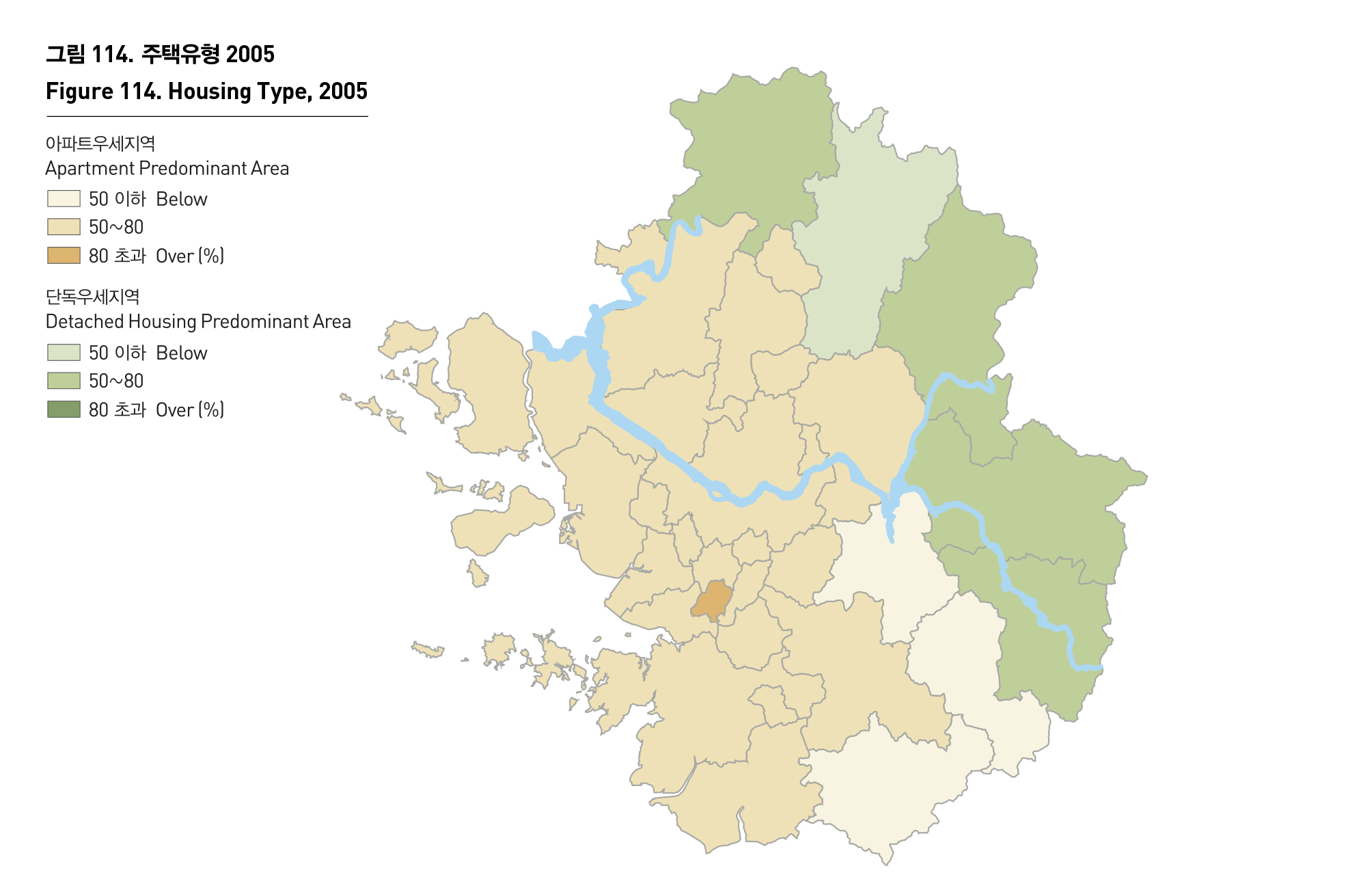-
수도권
주택유형
-
주택유형
아파트는 도시화와 인구밀집의 상징이다. 수도권에 아파트 단지가 확산된 과정은 곧 수도권 인구집중 과정이라 할 수 있다. 1980년대 초까지만 해도 서울의 강남지역을 중심으로 분포한 아파트 단지는 과천, 안양, 안산으로 확장되고, 이어 일산, 분당, 평촌, 산본, 중동 등 5개 신도시의 입주가 시작 되었다 이후 성남, 고양, 부천시 등수도권 위성도시가 급격히 아파트촌으로 바뀌게 되어, 동북부의 일부지역을 제외하고는 수도권 전체가 아파트우세지역으로 나타나고 있다. 최근 아파트지역, 즉 인구밀집지역은 더욱 외곽으로 확산되어 용인, 김포, 구리, 남양주시 등 서울 통근권내에 있는 지역은 아파트가 우후죽순 들어서고 있다. 그러나 교통망, 교육시설, 편의시설도 확보되지 않은 채 건립된 아파트는 난개발의 고통을 주민들에게 안기고 있으며, 주택유형 다양화의 측면에서도 바람직하지 않다.
HOUSING TYPE
Apartment symbolizes urbanization and population concentration. The process of apartment complex expanding in the metropolitan area is in line with the process of population influx into the metropolitan area. In the early 1980s, apartment complex, mainly in the south of Han river, expanded into Gwacheon, Anyang and Ansan, and the satellite cities, such as Seongnam, Goyang and Bucheon, rapidly transformed into apartment complex after people moved into 5 new towns including Ilsan, Bundang, Pyeongchon, Sanbon and Jungdong. As a result, the whole metropolitan area, except for some parts of northeastern region, became an apartment predominant area. As the apartment areas expanded into the suburbs, apartments have been built rapidly in regions where residents can commute to Seoul, such as Yongin, Kimpo, Guri, and Namyangju. However, apartment complex that is not equipped with transportation network, education facilities and convenience facilities causes inconvenience to residents, and is not desirable in terms of diversification of housing types.
출처 : 통계청, 인구주택총조사 보고서 1985, 1995, 2005



